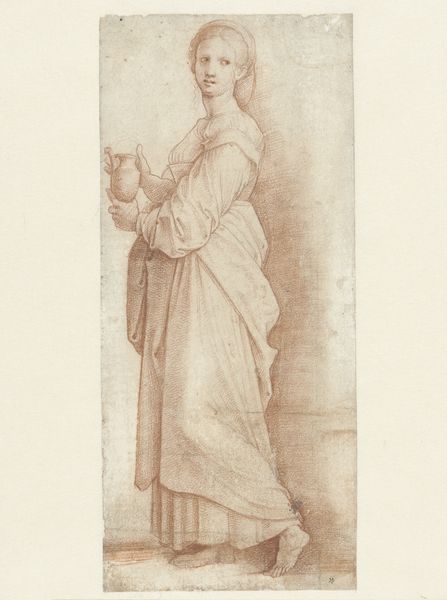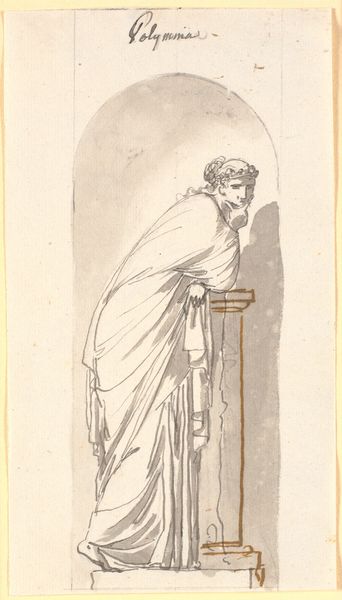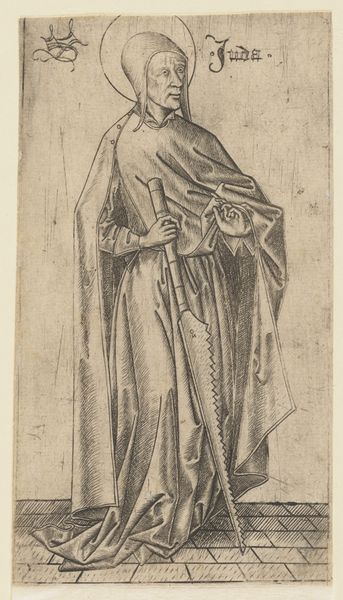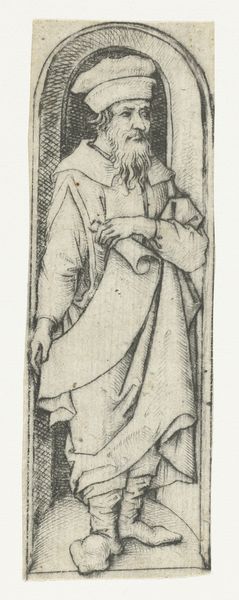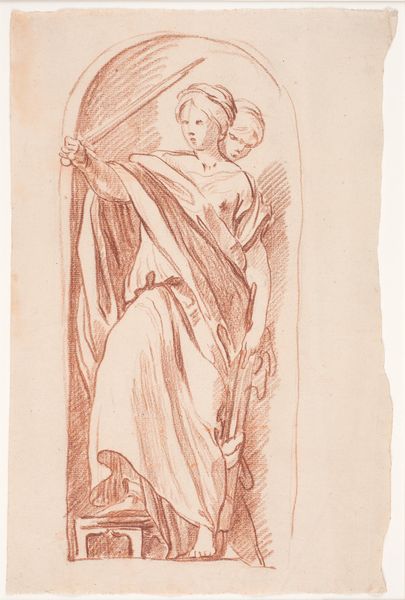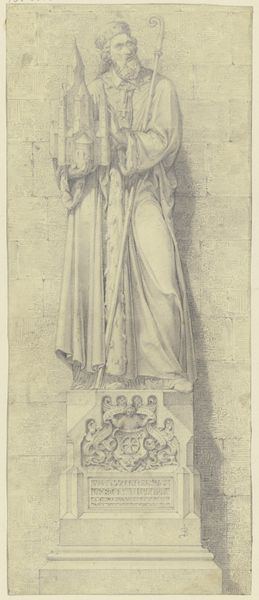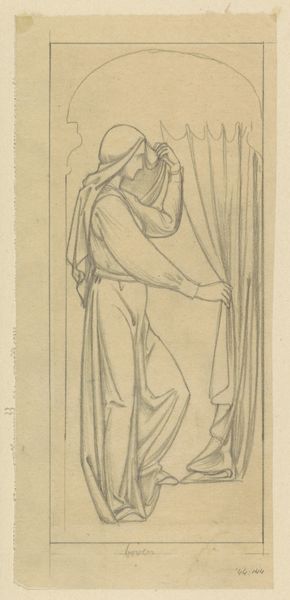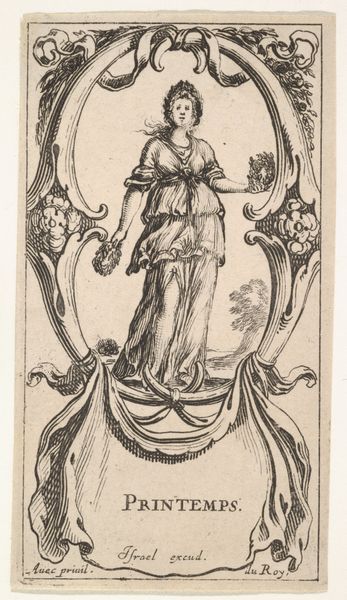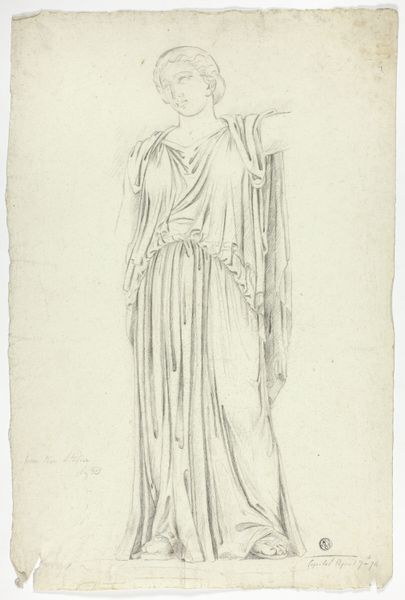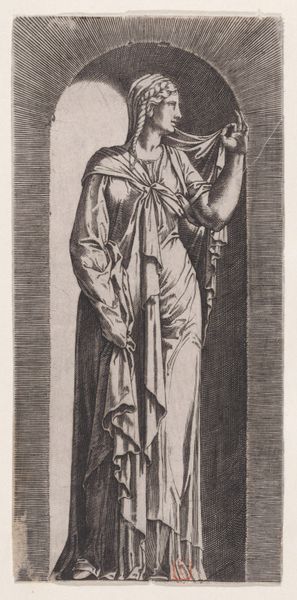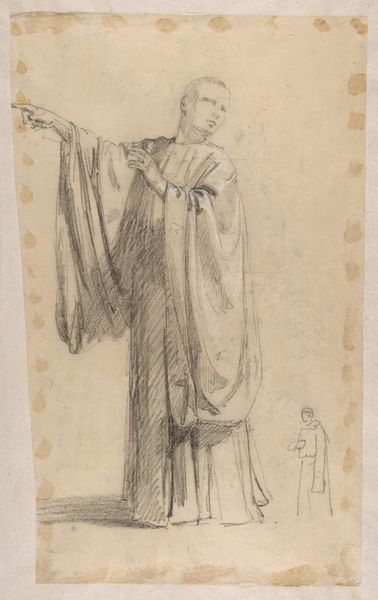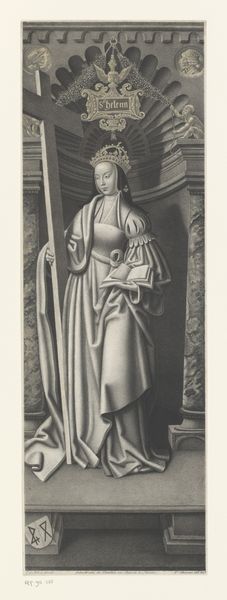
Vrouw met hamer en nagels. Fragmenten karton voor het glasraam in de westgevel van Joris van Egmond (Bisschop van Utrecht 1535-1559) voor de Sint Bavo Kerk te Haarlem 1541
0:00
0:00
drawing, paper, watercolor, ink
#
portrait
#
drawing
#
figuration
#
paper
#
11_renaissance
#
watercolor
#
ink
#
coloured pencil
#
northern-renaissance
Dimensions: height 12035 mm, width 580 mm, height 3710 mm, height 76 cm, width 27 cm, depth 27 cm
Copyright: Rijks Museum: Open Domain
Curator: The artwork we're observing is a fragment of cardboard designed by Gerrit Boels in 1541. Titled "Vrouw met hamer en nagels" – or "Woman with Hammer and Nails" – it was initially conceived as a carton for stained glass in the west facade of the Sint Bavo Kerk in Haarlem. My first impression is that it strikes a rather unusual, somewhat austere note for a church window design. Editor: It definitely departs from the visual spectacle one expects. There’s a muted palette here—primarily inks and watercolors on paper, and a curious emphasis on linear structure. The rigid architecture, stark contrasts... it almost has a blueprint quality. Curator: Precisely. What’s fascinating to consider is that the St. Bavo church held immense civic importance. This wasn’t merely a religious space; it served as a gathering place for the Haarlem community. Editor: So, this woman, with her tools…what does she signify in that context? Curator: I believe Boels' image offered a subtle, yet powerful, commentary on the role of labor and creation within the community. While images of male figures, like the patron saint, dominated, this suggests a hidden feminine influence involved in constructing the city's narrative—both literally and figuratively. Editor: The hammer and nails held aloft... they could even imply a subversive reclamation of traditionally masculine domains. I note also how the formal composition boxes the figure, reinforcing the structure around the protagonist. The contrast of her almost vulnerable stature with the graphic structural support she finds herself within offers up complex lines of enquiry. Curator: And this visual tension makes Boels' work compelling, pushing boundaries for its era. These cartons offered instruction—to direct stained glass creation and installation at that scale demanded some form of accessible guidance. I would go further and state it reflects the socio-political shifts of the early Renaissance. It acknowledges the agency of common workers. Editor: Considering it's an artifact *for* making an artifact— it creates interesting layering for interpretation. The raw materiality of the supporting stained glass, to its grand setting—it speaks volumes even in its cartoon fragment! Curator: I agree. A truly thought-provoking window into the past! Editor: Yes, this piece rewards contemplation!
Comments
No comments
Be the first to comment and join the conversation on the ultimate creative platform.
